For the November CEO’s Corner, we have included the presentation that was made October 28, 2014 by President & CEO Jim Mulhern and Chairman Randy Mooney at the NMPF annual meeting in Grapevine, Texas. (Download a PDF version of the remarks.)
Randy Mooney (below) – It’s good to be back in Dallas. Mostly because things are very different, and much better, for dairy farmers today compared to the last time we were here together. Those of you who came to the Gaylord Texan in the fall of 2009 will remember what a terrible time that was. Not because of this facility, but because of what was happening on our farms back home. All that equity, down the drain, as we lost money on every hundredweight we were producing, for much of 2009.
 It was a tough time to be up here on stage, not only because it was my first year as Chairman… but it was also a tough time to be leading any dairy organization. No one could appreciate just how big the economic calamity was going to be for our industry. Many of us still remember the difficult nights, sitting at our kitchen tables, struggling to figure out which bills to pay. Five years later, what a difference there is! Farmers’ milk prices reached record levels this year, on the back of record prices for cheese and butter. Moreover, the cost of feeding our animals dropped dramatically, thanks to a near-perfect growing season across the Corn Belt. Those 3-dollar margins in 2009 have been 10 dollars a hundredweight higher in 2014. Talk about Partners in Progress: that’s progress of the most important kind!
It was a tough time to be up here on stage, not only because it was my first year as Chairman… but it was also a tough time to be leading any dairy organization. No one could appreciate just how big the economic calamity was going to be for our industry. Many of us still remember the difficult nights, sitting at our kitchen tables, struggling to figure out which bills to pay. Five years later, what a difference there is! Farmers’ milk prices reached record levels this year, on the back of record prices for cheese and butter. Moreover, the cost of feeding our animals dropped dramatically, thanks to a near-perfect growing season across the Corn Belt. Those 3-dollar margins in 2009 have been 10 dollars a hundredweight higher in 2014. Talk about Partners in Progress: that’s progress of the most important kind!
So, Jim I have some advice for you: claim credit for the good stuff that happens, and if there are any problems, just remind people it’s only your first year.
 Jim Mulhern (at left) – This truly has been a whirlwind year for me, much as 2009 must have been for you. Only, look how much better dairy prices are after my first year! I certainly cannot claim credit for our industry’s good economic fortune this year, but I can tell you that, as an organization we have worked very hard to address a wide range of challenging issues and opportunities… We have done so with the strong support and engagement of many of you in this room and across the dairy cooperative community. That, to me, is what Partners in Progress means: working together, with our members, and our colleagues in promotion, to create a more stable and sustainable industry, and a less volatile economic environment, for our dairy farmer-members. These last twelve months have been an extremely busy and productive period of activity. So as we start our talk today, let’s pick up right where we left off in 2013. We returned to Washington from our annual meeting in Arizona last November to wrangle with the Congress over the farm bill. We worked hard through the holidays to convince the House-Senate conference committee to pass a bill containing the margin insurance program that we first started designing after the dark days of 2009 that Randy mentioned earlier. We also sought passage of a market stabilization program, the second part of the Dairy Security Act, the comprehensive plan developed and advanced by National Milk and its member cooperatives during the previous four years. As all of you know, we strongly believed that market stabilization was needed to help prevent the price-depressing surpluses that could increase the cost of the margin protection program, and thereby undermine its fiscal integrity.
Jim Mulhern (at left) – This truly has been a whirlwind year for me, much as 2009 must have been for you. Only, look how much better dairy prices are after my first year! I certainly cannot claim credit for our industry’s good economic fortune this year, but I can tell you that, as an organization we have worked very hard to address a wide range of challenging issues and opportunities… We have done so with the strong support and engagement of many of you in this room and across the dairy cooperative community. That, to me, is what Partners in Progress means: working together, with our members, and our colleagues in promotion, to create a more stable and sustainable industry, and a less volatile economic environment, for our dairy farmer-members. These last twelve months have been an extremely busy and productive period of activity. So as we start our talk today, let’s pick up right where we left off in 2013. We returned to Washington from our annual meeting in Arizona last November to wrangle with the Congress over the farm bill. We worked hard through the holidays to convince the House-Senate conference committee to pass a bill containing the margin insurance program that we first started designing after the dark days of 2009 that Randy mentioned earlier. We also sought passage of a market stabilization program, the second part of the Dairy Security Act, the comprehensive plan developed and advanced by National Milk and its member cooperatives during the previous four years. As all of you know, we strongly believed that market stabilization was needed to help prevent the price-depressing surpluses that could increase the cost of the margin protection program, and thereby undermine its fiscal integrity.
Randy Mooney – Jim, the farm bill is indeed a great place to start our talk because the entirely new federal dairy program created in that legislation is the biggest policy news of the past 12 months. Frankly, it’s not just the biggest news of the year, but the biggest dairy policy development in 30 years. And as you noted, we didn’t get everything we wanted in the farm bill. The opposition of the House leadership to the market stabilization element proved to be just too big a hurdle. While we knew we had the votes for our plan in the conference committee, Speaker John Boehner was effectively able to block adoption of our plan. But while we didn’t get exactly what we wanted, I am still convinced we’ve gotten what we need. And, the truth is, if we had proposed a margin-only program from the start, we would have gotten much less than what we came out with – that’s just the nature of the political process. The new Margin Protection Program is going to be more flexible, more fair, and more functional than the old MILC program. Also important, the new Dairy Donation Program will be more useful than the old price support program.
Jim Mulhern – That’s an important point, Randy, and one that is often overlooked in discussions about the new dairy provisions in the farm bill. The reason we agreed with Congress on the creation of the Dairy Product Donation Program is that it can provide a needed boost to help stimulate market demand if we are again experiencing low-margin situations. If we aren’t able to put pressure on the supply side of the ledger through the market stabilization element, we argued – successfully – then we need a tool to affect demand. So the Dairy Product Donation Program was created as a new opportunity to boost demand. And that’s what’s in the farm bill.
But, beyond that, I want, most of all, to remind farmers to take action and enroll their operation in the Margin Protection Program by USDA’s Thanksgiving deadline. Even if you only want the bare-bones catastrophic coverage for next year it will only cost you 100 dollars! And remember, no one can accurately predict what the actual margin will be next year. Coverage above the $4 catastrophic level is available to all farms – so you can select the coverage level that best meets the needs of your individual farm operation. And you can ensure up to 90 percent of your production history. For a relatively small investment you can do a lot to protect the future of your farm. Randy, at this morning’s Town Hall meeting we talked about many of the key policy issues affecting dairy producers, and the staff provided very good updates of our work on those issues. We don’t need to rehash all of that, but I do think there are several areas worth focusing on, because they are critically important to NMPF’s members and to the entire industry. Chief among these many important issues, in my mind, are trade policy, immigration reform, animal care, and ongoing environmental challenges.
Randy Mooney – I agree, Jim. Let’s do a quick review of those. In 2009, the now-defunct price support program tried to help farmers by purchasing surplus products, especially milk powder. Our exports dropped significantly, and domestic milk prices were at rock bottom, even as world trade in dairy products actually increased. This chart shows the drop we suffered in exports in 2008 and 2009. It fueled the drop in farm-level prices we experienced.
Jim Mulhern – And the reason for that drop is that the price support program, which was designed to serve as a crutch, actually tripped up our exports. Products that could and should have been sold commercially, went instead to the USDA. The world didn’t stop buying dairy products, but the U.S. largely removed itself from selling into world markets, contributing to prolonged low U.S. milk prices that continued throughout most of 2009. When we talk about dairy trade in the future, here’s one thing to keep in mind: the USDA will no longer be in the business of purchasing and storing bulk dairy commodities under the old price support program. The market is going to clear on its own, and milk will find a home, either domestically or internationally. The good news is that we now have the Margin Protection Program to help farmers survive a downturn by providing producer income protections in a way that the old price support program never could.
Randy Mooney – Since 2009, U.S. exports have come roaring back. We’re a bigger player than ever in key markets like China, where one in every five people on Earth live. We’re a major source of butter and cheese in the Middle East, Latin America, and other developing regions.
And we continue to grow exports to our best customers, and closest neighbors, in Canada and Mexico. Make no mistake, for the U.S. dairy industry, world trade in dairy is today’s reality and tomorrow’s opportunity. Our industry is committed to the world market and we fully intend to be a major player. “Creating a World of Opportunities” captures our increasing focus on markets both in the U.S. and abroad. Let the message go far and wide: get ready world – here we come!
Jim Mulhern – That’s why our industry has so much riding on the set of international trade negotiations underway right now. And it is why we are focusing so much time and attention on them. Across the Pacific, 12 nations are working on a free trade agreement known as the Trans-Pacific Partnership. And for the U.S. dairy industry, Japan is a huge potential opportunity in those negotiations. We could export a lot more dairy products, as well as other agricultural products like beef and pork, if the U.S. government can achieve a breakthrough in negotiations and bring back a trade agreement providing meaningful increased market access there. Our staff has engaged in continuous, ongoing dialogue with U.S. trade negotiators to keep pushing on that point. We’ve educated hundreds of our elected officials in the House and Senate about how important this issue is to our farmers and our entire industry. And we are pleased with the responsiveness and support we’ve received from policymakers. Agriculture Secretary Tom Vilsack, who will be with us here tomorrow, and U.S. Trade Ambassador Michael Froman understand our concerns, and they are pushing very hard on the Japanese to open their markets to our dairy products as well as other U.S. ag commodities.
Randy Mooney – The stakes are huge, and not just in Japan. If that country, the fourth-largest economy in the world, were allowed to block freer trade in dairy products in the TPP, then it would make it easier for Canada – also part of the negotiations – to thumb their noses at opening their market further. As a reminder, the North American Free Trade Agreement 20 years ago cracked open the Northern door to our dairy exports – but only a sliver. We now have an opportunity in the TPP to push that door open wider. But if Japan is able to keep its doors closed, Canada will seek the same treatment. If this is truly to be a “free trade agreement” our negotiators cannot allow that to happen. And we will continue working tirelessly to make sure it doesn’t.
Jim Mulhern – On the other side of the world, the Trans-Atlantic Trade and Investment Partnership also represents opportunity to better position our exports, and take advantage of one of the largest consumer markets in the world. The U.S. has been trying for more than a decade to achieve a World Trade Organization agreement to increase our opportunities to export to the European Union. But that effort has sputtered out, making the TTIP the only game in town. The challenge here is very similar to the one in Japan: entrenched European dairy interests don’t want more competition from the U.S. They don’t want a world of opportunities if it means having to compete for market share with a fully engaged U.S. dairy industry. And as you all heard earlier today, the European defense strategy includes an outrageous focus on bastardizing the concept of Geographical Indicators in an attempt to claw back, for their own protectionist use, the names of many common foods. These foods include many cheeses that we’ve been making for decades – products like parmesan and gorgonzola, feta and camembert and asiago. Many of these cheeses were made popular in the U.S., by U.S. companies, not imports…but European companies are now trying to claim them for their exclusive use. We’ve made a big push in Washington this year to educate our lawmakers about the threat posed by Geographic Indicators. And this is not just a U.S. – European spat. Many of the cheese companies that could lose their labels are in other countries that also have decades of history with common, historic names. Christopher Columbus’s relatives in the Old World can keep their Parmigiano-Reggiano. But those of us in the New World, the one Columbus discovered many years ago, have every right to make and market award-winning Parmesan, for the use and enjoyment of folks here and, ultimately, around the world.
Randy Mooney – I couldn’t agree more, Jim. Now, there’s another element critical to our ability to export and take advantage of growing markets that we need to address today: Cooperatives Working Together. For more than eleven years, Cooperatives Working Together has provided tremendous help for all America’s dairy farmers by improving our economic landscape. During the past four years, the exclusive focus of CWT has been on helping grow sales of U.S.-produced cheese, butter, and whole milk powder. The rise in exports in the past decade is due to a number of factors, but a big one is that we have, in our Cooperatives Working Together program, a very effective tool to help seal the deal in markets where we are competing with products from other countries.
Jim Mulhern – Over the past few months we’ve been hearing a lot about the decline in world dairy prices. And yet, as noted at the start of this speech, dairy farmers here are still enjoying historically high prices. How is that possible, you might ask, that farmers in New Zealand are seeing a 40% drop in farm gate prices, while farmers here are enjoying a year of record high milk prices, as well as cheese and butter prices that have been 40 percent higher than world market prices? The answer, to a considerable degree, is Cooperatives Working Together. That’s because it is CWT’s exports that have helped keep domestic inventories low. The fundamental fact is that the interplay between supply and demand determines prices for dairy products – and hence, farm milk prices. By moving additional quantities of product from the U.S. market into world markets, our Cooperatives Working Together program, in conjunction with strong domestic sales, has kept domestic inventories low. That increased demand created through CWT has helped strengthen milk prices across the board. So all of the nation’s dairy farmers owe a strong debt of gratitude to the farmers and cooperatives who are working together by funding CWT, and helping put more dollars into your pockets.
Randy Mooney – It’s time to plan for the FUTURE of Cooperatives Working Together. While the funding commitment for CWT runs for another 14 months, the time for NMPF’s members to engage in the renewal process – and commit to CWT is now. No other investment we make can pay off like CWT. And getting back to a point we made earlier: having a self-funded initiative to find a market for our products is going to be even more critical, in an era where there is no price support program, or a USDA export incentive program, to absorb excess production. We need CWT as a central part of our safety net, to complement and reinforce the effectiveness of the Margin Protection Program. This is where NMPF members and non-members alike need to be Partners in Progress.
Jim Mulhern – Let’s shift gears to talk about another issue that is going to need the continued attention of our industry and our membership, and that is immigration reform. We talked about the issue earlier today; unfortunately we’ll be talking about it in the months, but hopefully not years, ahead. Let’s be clear: we’re going to continue working toward a solution to the labor challenges facing farmers, until we’re successful. This issue must be resolved. There is no other choice.
Randy Mooney – The frustration many farmers face, not just dairy producers, but all of us in agriculture who need workers, is that it is very hard to find good people to do the difficult and challenging work we experience daily on our farms. The people we do have access to aren’t always documented. And the most frustrating thing is, everyone acknowledges the system is broken, yet we can’t seem to fix it in Washington. We made what looked like great progress last year, when the U.S. Senate passed a comprehensive reform bill, but the process ground to a halt in the House of Representatives.
Jim Mulhern – Yes, Randy, the window appears to have closed on Capitol Hill on this issue for 2014. Frankly, Congress is not measuring up to the already-low expectations we had for them. However, we can’t let that deter us. NMPF continues working on efforts to tackle the issue with the new Congress in 2015. Right now, we don’t know if we’ll be dealing mostly with Democrats, or Republicans, in the Senate. We’ll know the answer to that after next week. But regardless, our industry and our members must continue to beat the drum in Washington, and – more importantly – in states and Congressional districts across the nation, that immigration reform must be dealt with, and finally resolved, in the coming year.
Randy Mooney – Jim, you are exactly right. I know we have more work to do. We need to keep sending a strong message from the grassroots on this issue. It’s been a challenge, but without a vocal expression from farmers, it will be easier for politicians to ignore it. We can’t afford to let that happen. So, the message here is that we will need your help, yet again, in 2015 – and possibly beyond next year – to help pass a long-term, meaningful solution to the immigration reform problem. To create the opportunity to solve the immigration challenge, we’ll need more of your work. Jim, another area where we must also be proactive and vocal is that of animal care. This gets to the heart and soul of what we as dairy farmers do. I personally know that it’s frustrating for us when we hear a small but vocal minority of critics attack dairy farmers and paint a twisted and false image of the care we provide our animals.
Jim Mulhern – Randy, all of us in this room know that dairy farmers all across this country, are providing better care than ever before to their herds. Cow comfort is at the top of the list of priorities for our farmers because conscientious animal care is not just morally and ethically right; a healthy cow is more productive and thus even more valuable, so it makes good business sense as well. We have better knowledge today than ever before about what makes cows productive, and good animal husbandry is the key. But it is also clear in this age of social media and the internet that we’re past the point where we can ask people just to take our word for it. Consumers increasingly do want to know the provenance of their food, and how it was raised. And it is our job to tell them that.
Randy Mooney – Yes, walking the walk on animal care means having a rigorous, science- based and broadly-used system in place that we can all utilize, and that enables us to address these societal concerns about dairy animal care. That’s why NMPF created the Farmers Assuring Responsible Management program five years ago. And it is needed today, more than ever, because more questions are being asked today about where milk comes from. We hear it from our customers, from consumers, and from the media. Even if we didn’t have to deal with these videos from animal rights groups, we still need to tell consumers the real story about proper animal care on today’s dairy farms.
Jim Mulhern – And so the FARM program enables us to tell the story, to all those audiences you mentioned, Randy. The great news is the information we collect in the FARM program, from thousands of on-farm evaluations across the country, is a very compelling story. It demonstrates, clearly, that we are doing things right on our farms. The adherence to the animal care practices called for in the FARM program is north of 90 percent on most indicators. That’s a great story. And it’s one we need to tell far and wide. But the value of such a program is directly related to the overall commitment of our industry to use it. By that I mean, how many co-ops and processors are using it, and how many individual farms are using it. While we have had very good adoption of the program on farms across the country over these last five years, we still have too many farms not in the program. That’s why I am proud that our Board of Directors decided just yesterday to require that in order to be listed as an organization participating in the FARM program, you must require that all your farms are covered by it. This is important progress. It will strengthen the FARM program and further demonstrate to our customers and consumers that we are proud of the care we provide our animals, and we want the world to know it.
Randy Mooney – Jim, what our board did is so important to the future success of the FARM program. It sends a clear signal that an important part of continuous improvement means expanding the participation level in each of our cooperatives. It will make for better conversations with our customers about the integrity of the program, and how we are implementing it. It means that all of our farms will be held to the same high standards, with no exceptions. And it helps us demonstrate that farms, regardless of size, are run by families, families who take pride in what they do, and are committed to running a successful business that centers on producing high-quality milk from healthy cows.
Jim Mulhern – Randy, there’s one more issue I’d like to highlight this afternoon, and that is our increasing need to focus on environmental issues. For many years, despite the fact that clean air and clean water mandates were established nationally, the actual regulations were largely local issues. And National Milk, with a few exceptions, did not devote as much time and effort to the subject. But as I laid out in my remarks last year, it is critically important to our industry’s future that we not only focus greater attention on these issues, but that we do so pro-actively, and with a strategy to turn them from a liability to an opportunity.
Randy Mooney – Jim, you know that both crop and livestock farmers – and of course, many dairy farmers have a foot in both those camps – are all facing more scrutiny about their environmental footprint. From greenhouse gases, to soil conservation, to nutrient management — although we have fewer farmers today, we have as many, if not more, headaches. And the pressure to deal with the impact of our farms is continuing.
Jim Mulhern – In recognition of this situation, one of our major efforts this past year has been to focus on proactive strategies and initiatives to tackle this issue head-on. One example is our industry’s work with USDA, the EPA and the White House, on a biogas roadmap, announced by the President earlier this year. This effort, which was initiated at the request of the dairy industry, can help accelerate the adoption of biogas systems on dairy farms and other facilities that generate methane. It will help pool federal and private sector resources, and identify regulatory barriers that must be removed in order to capitalize on the opportunity to generate renewable energy on our farms, lowering our energy costs and reducing our dependence on fossil fuels. And, just as importantly, it will help preserve our freedom to operate by having the government focus on voluntary efforts, as opposed to mandatory regulations.
Randy Mooney – The biogas roadmap is one part of addressing the challenges we face. Another, even more impactful effort, is the nutrient recovery project that NMPF and DMI are spearheading. You heard some about it earlier today, but let me restate a key point: this effort can help create entirely new revenue streams for our farms. It can take what is now often considered a waste product and an environmental headache, and turn it into something valuable. And there is a key role for our cooperatives in helping our members capture and realize these potential economic and environmental benefits. This whole area represents an entirely new service that co-ops can offer their members, providing another great member benefit and reason to belong to a co-op.
Jim Mulhern – Randy, like many of us this in this room, I’ve been around long enough to remember when the whey stream from cheese plants was an environmental liability, something you had to dispose of in ways that hopefully didn’t violate any laws. And yet today, whey has been transformed into something like white gold, a nutritious, high-protein source of money to cheese plants, and a boost to farmers’ Class III price. There was no sudden change in the nutrients in whey. We just began to look at it differently, because we had to. That’s where we are today with manure. We need to look at our energy and nutrient recovery project in the same light; it’s the “new whey” – a way to take the waste stream from farms, and monetize it. We have a great deal more work ahead of us to turn this from a dream into a reality, but thanks to the vision, commitment, and initial spadework of some of our coops, I firmly believe this will be a long-term boon to our farmers and cooperatives by creating new revenue sources, reducing regulatory pressures and legal challenges by solving potential environmental problems before they occur, and enhancing consumer and public attitudes toward our industry.
Randy Mooney – We’ve spent the last few minutes covering the many challenges facing our industry. But I’m convinced with each challenge, there is an equal and even greater opportunity. We have a world of opportunities awaiting us that, working together, we can take advantage of. Thank you all for coming, for your support of NMPF, and its member organizations, and your participation in this meeting. I want to thank our Board of Directors for their commitment to this organization, especially our officers. I also want to thank the National Milk staff for their hard work this past year. We have a well-oiled machine that keeps delivering for our members, and the staff is what keeps it humming. I’m looking forward to continued progress – and being a Partner in Progress – into next year, and beyond.
Jim Mulhern – Randy, I’d like to echo those thanks, and reinforce an idea I shared with this group last year, when we met in Arizona. It was my first speech as the President of NMPF, and among the points I made, perhaps the most important was the need for engagement on the part of farmers. Engagement in NMPF, and in the industry more broadly. Engagement in the political process, in governmental institutions, in social media, in your communities. The number of dairy farms, and farms of other commodities, continues to shrink. The political footprint of agriculture is contracting. That’s one reason why it was such a challenge to pass a new farm bill.
We simply don’t have the same grassroots base as a generation ago, when I first worked at NMPF. We need a great quality of outreach from our members, because the quantity isn’t what is used to be. But working together, concentrating and amplifying our efforts, we can continue to accomplish great things. We must be Partners in Progress, Creating a World of Opportunities, today and well into the future. Thank you.
 The REAL® Seal has posted a Thanksgiving-themed video on YouTube for November.
The REAL® Seal has posted a Thanksgiving-themed video on YouTube for November.
 Irv Holmes, CEO of Challenge Dairy Products, Inc., in Dublin, California, is the new chairman of board of the
Irv Holmes, CEO of Challenge Dairy Products, Inc., in Dublin, California, is the new chairman of board of the  It was a tough time to be up here on stage, not only because it was my first year as Chairman… but it was also a tough time to be leading any dairy organization. No one could appreciate just how big the economic calamity was going to be for our industry. Many of us still remember the difficult nights, sitting at our kitchen tables, struggling to figure out which bills to pay. Five years later, what a difference there is! Farmers’ milk prices reached record levels this year, on the back of record prices for cheese and butter. Moreover, the cost of feeding our animals dropped dramatically, thanks to a near-perfect growing season across the Corn Belt. Those 3-dollar margins in 2009 have been 10 dollars a hundredweight higher in 2014. Talk about Partners in Progress: that’s progress of the most important kind!
It was a tough time to be up here on stage, not only because it was my first year as Chairman… but it was also a tough time to be leading any dairy organization. No one could appreciate just how big the economic calamity was going to be for our industry. Many of us still remember the difficult nights, sitting at our kitchen tables, struggling to figure out which bills to pay. Five years later, what a difference there is! Farmers’ milk prices reached record levels this year, on the back of record prices for cheese and butter. Moreover, the cost of feeding our animals dropped dramatically, thanks to a near-perfect growing season across the Corn Belt. Those 3-dollar margins in 2009 have been 10 dollars a hundredweight higher in 2014. Talk about Partners in Progress: that’s progress of the most important kind! Jim Mulhern (at left) – This truly has been a whirlwind year for me, much as 2009 must have been for you. Only, look how much better dairy prices are after my first year! I certainly cannot claim credit for our industry’s good economic fortune this year, but I can tell you that, as an organization we have worked very hard to address a wide range of challenging issues and opportunities… We have done so with the strong support and engagement of many of you in this room and across the dairy cooperative community. That, to me, is what Partners in Progress means: working together, with our members, and our colleagues in promotion, to create a more stable and sustainable industry, and a less volatile economic environment, for our dairy farmer-members. These last twelve months have been an extremely busy and productive period of activity. So as we start our talk today, let’s pick up right where we left off in 2013. We returned to Washington from our annual meeting in Arizona last November to wrangle with the Congress over the farm bill. We worked hard through the holidays to convince the House-Senate conference committee to pass a bill containing the margin insurance program that we first started designing after the dark days of 2009 that Randy mentioned earlier. We also sought passage of a market stabilization program, the second part of the Dairy Security Act, the comprehensive plan developed and advanced by National Milk and its member cooperatives during the previous four years. As all of you know, we strongly believed that market stabilization was needed to help prevent the price-depressing surpluses that could increase the cost of the margin protection program, and thereby undermine its fiscal integrity.
Jim Mulhern (at left) – This truly has been a whirlwind year for me, much as 2009 must have been for you. Only, look how much better dairy prices are after my first year! I certainly cannot claim credit for our industry’s good economic fortune this year, but I can tell you that, as an organization we have worked very hard to address a wide range of challenging issues and opportunities… We have done so with the strong support and engagement of many of you in this room and across the dairy cooperative community. That, to me, is what Partners in Progress means: working together, with our members, and our colleagues in promotion, to create a more stable and sustainable industry, and a less volatile economic environment, for our dairy farmer-members. These last twelve months have been an extremely busy and productive period of activity. So as we start our talk today, let’s pick up right where we left off in 2013. We returned to Washington from our annual meeting in Arizona last November to wrangle with the Congress over the farm bill. We worked hard through the holidays to convince the House-Senate conference committee to pass a bill containing the margin insurance program that we first started designing after the dark days of 2009 that Randy mentioned earlier. We also sought passage of a market stabilization program, the second part of the Dairy Security Act, the comprehensive plan developed and advanced by National Milk and its member cooperatives during the previous four years. As all of you know, we strongly believed that market stabilization was needed to help prevent the price-depressing surpluses that could increase the cost of the margin protection program, and thereby undermine its fiscal integrity.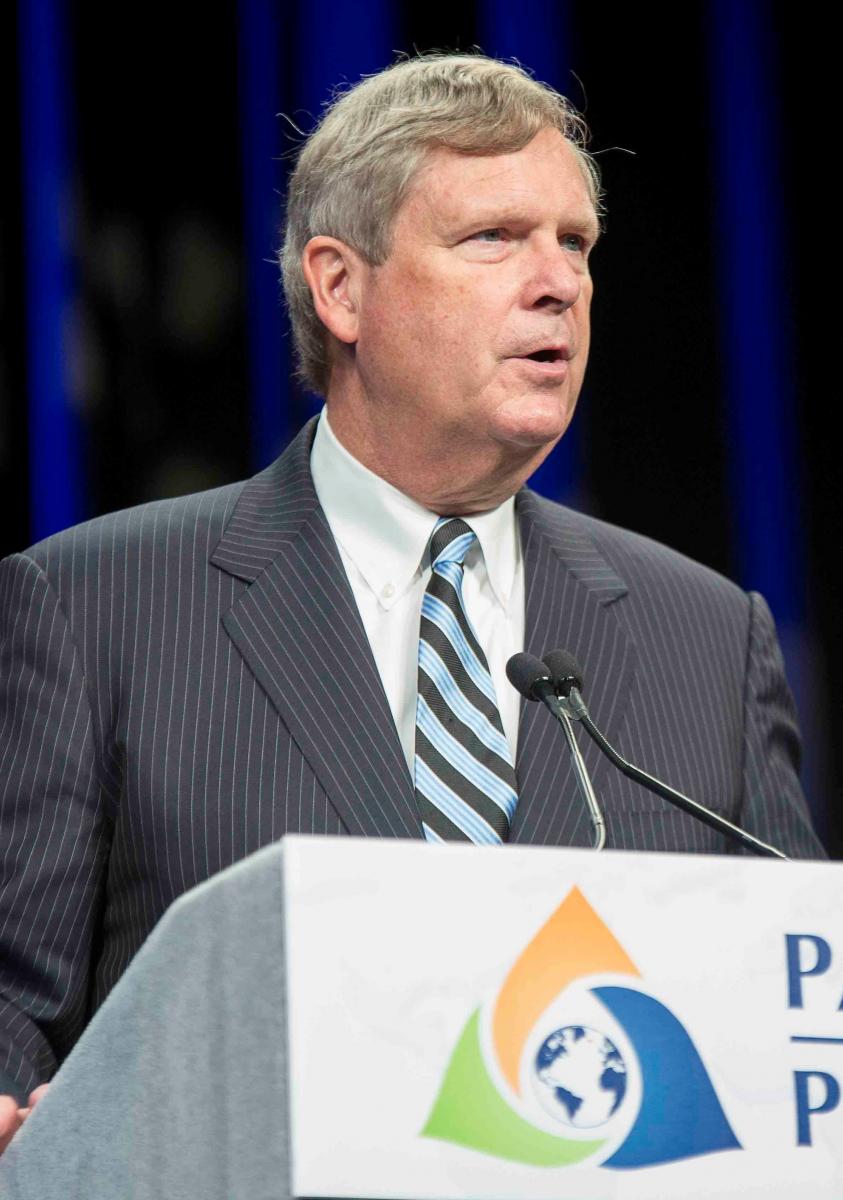 GRAPEVINE, Texas – The National Milk Producers Federation welcomed four new dairy cooperative members, two new board members and one new board officer, as the organization wrapped up its 2014 annual meeting here Wednesday.
GRAPEVINE, Texas – The National Milk Producers Federation welcomed four new dairy cooperative members, two new board members and one new board officer, as the organization wrapped up its 2014 annual meeting here Wednesday.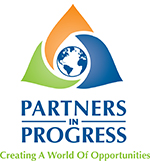 other key issues, including the fight for meaningful immigration reform, and opening more foreign markets to U.S. dairy products.
other key issues, including the fight for meaningful immigration reform, and opening more foreign markets to U.S. dairy products. beat the drum in Washington, and – more importantly – in states and congressional districts across the nation, that immigration reform must be dealt with, and finally resolved, in the coming year,” he said.
beat the drum in Washington, and – more importantly – in states and congressional districts across the nation, that immigration reform must be dealt with, and finally resolved, in the coming year,” he said. the care we provide our animals.”
the care we provide our animals.”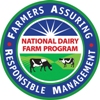 organization’s animal care program must enroll all its farmer-suppliers to ensure full participation in the program.
organization’s animal care program must enroll all its farmer-suppliers to ensure full participation in the program. 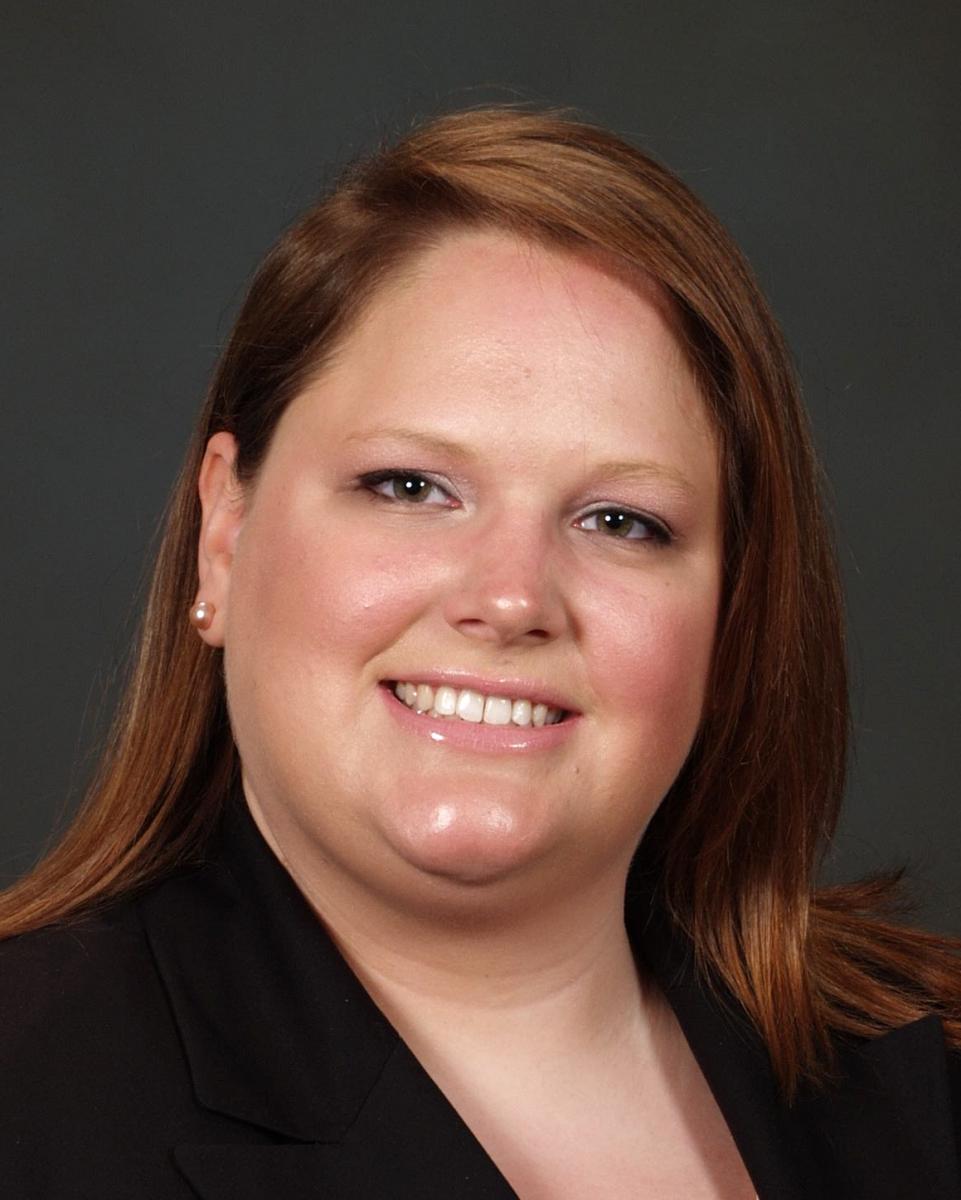 will join NMPF next month as vice president of animal care. She replaces Betsy Flores, who left in mid-October for a position at the U.S. Department of Agriculture.
will join NMPF next month as vice president of animal care. She replaces Betsy Flores, who left in mid-October for a position at the U.S. Department of Agriculture.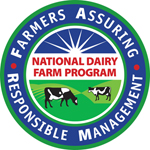
 The agenda for NMPF’s 2014 annual meeting, set for the Gaylord Texan Resort in Grapevine, Texas, October 27-29, is shaping up as one of the best in years.
The agenda for NMPF’s 2014 annual meeting, set for the Gaylord Texan Resort in Grapevine, Texas, October 27-29, is shaping up as one of the best in years.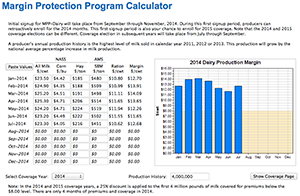 Dairy farmers have until December 5 to sign up for the new federal dairy safety net, known as the Margin Protection Program, or MPP. To help farmers understand the program, NMPF has a variety of on-line tools, including a five-page written
Dairy farmers have until December 5 to sign up for the new federal dairy safety net, known as the Margin Protection Program, or MPP. To help farmers understand the program, NMPF has a variety of on-line tools, including a five-page written  “Dairy farmers are starting to make their participation decisions,” said NMPF President and CEO Jim Mulhern. “The calculator and the other NMPF tools should help them make the best choices for their individual circumstances.”
“Dairy farmers are starting to make their participation decisions,” said NMPF President and CEO Jim Mulhern. “The calculator and the other NMPF tools should help them make the best choices for their individual circumstances.” The recent release of the
The recent release of the 
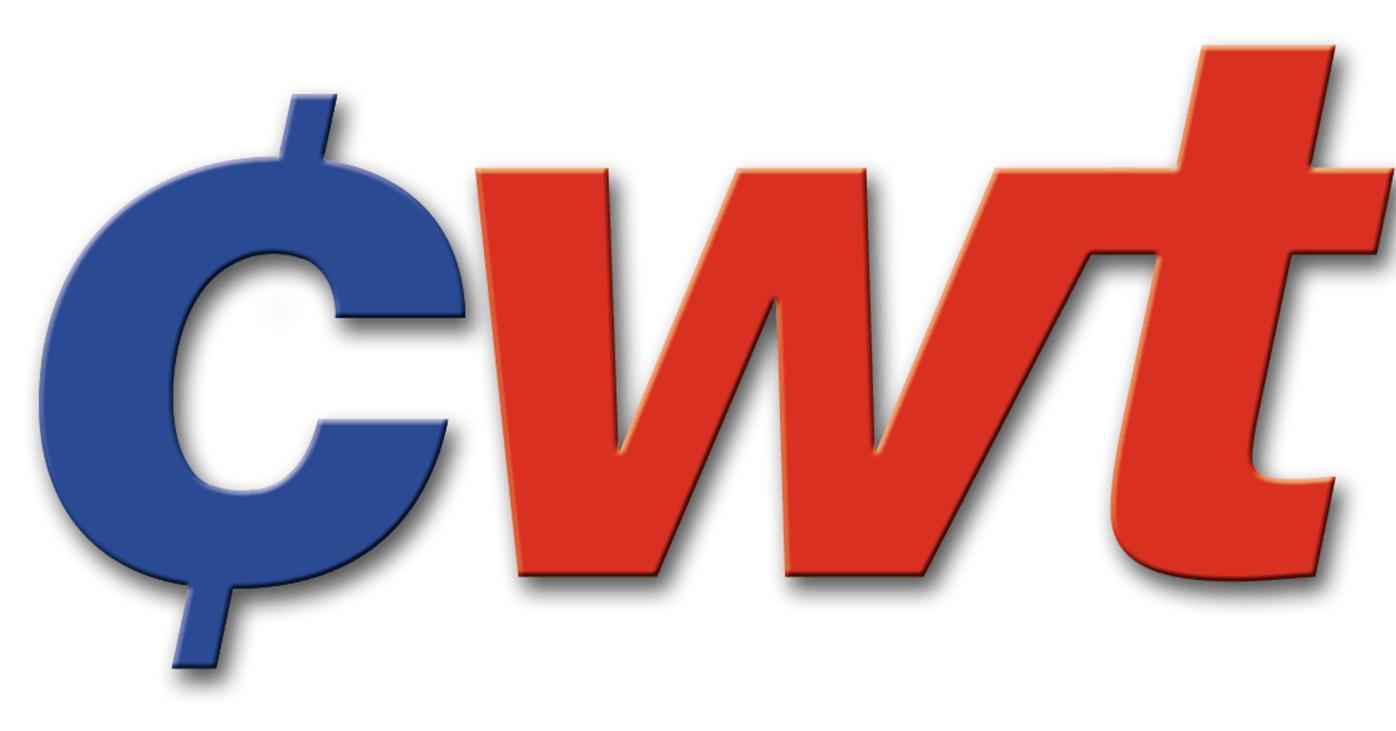 Cooperatives Working Together
Cooperatives Working Together



